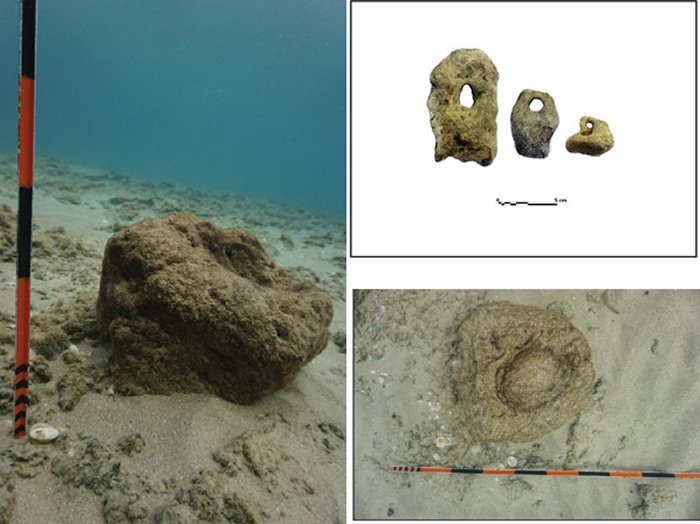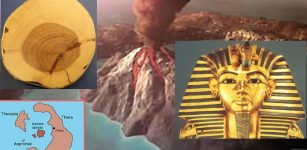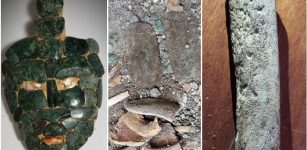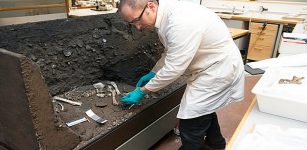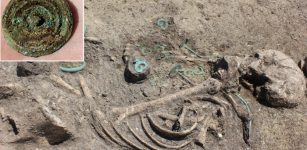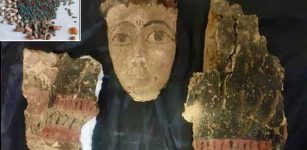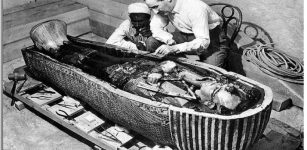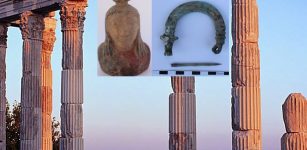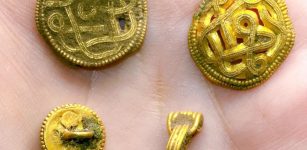Underwater Stone Age Village Habonim North Found Off Israel’s Carmel Coast Thrived During Climate Change
Conny Waters - AncientPages.com - The discovery of a settlement approximately 100 meters from the Israeli coastline has yielded significant archaeological findings. This site, dating back more than 8,000 years, has provided researchers with unexpected insights upon analysis of the recovered artifacts.
Divers investigating the submerged Stone Age village Habonim North. Credit: University of California, San Diego
A notable climatic shift occurred circa 6,200 B.C., characterized by a global temperature decrease, rising sea levels, and drought conditions in the southern Levant region, encompassing present-day Israel, Palestinian territories, Jordan, Lebanon, southern Syria, and the Sinai desert. This environmental change had a profound impact on numerous settlements in the area.
Prior to this discovery, the prevailing hypothesis among archaeologists suggested that this abrupt climatic event resulted in the widespread abandonment of Mediterranean coastal settlements. However, a recent study published in the journal Antiquity presents new evidence indicating that at least one village, previously presumed deserted, not only maintained occupancy but flourished throughout this period.
The submerged Neolithic site of Habonim North is located approximately 100m west of the current shoreline off the Carmel Coast, Israel. Credit: University of California, San Diego
The village in question, Habonim North, was initially identified off Israel's Carmel Coast in the mid-2010s. Subsequent surveys were conducted by a research team led by Dr. Ehud Arkin Shalev from the University of Haifa. Before the excavation and analysis of this site, there was limited evidence of human habitation along the southern Levantine coast during the 8.2ka event.
The excavation, which transpired during the COVID-19 lockdown, necessitated a continuous, round-the-clock effort spanning several weeks. This collaborative endeavor involved researchers from the University of California, San Diego, and the University of Haifa, marking the first formal excavation of this submerged archaeological site.
“This [study] helped fill a gap in our understanding of the early settlement of the Eastern Mediterranean coastline,” said Thomas Levy, a co-author on the paper, co-director of the Center for Cyber-Archaeology and Sustainability (CCAS) at the UC San Diego Qualcomm Institute (QI), inaugural holder of the Norma Kershaw Chair in the Archaeology of Ancient Israel and Neighboring Lands in the Department of Anthropology, and a distinguished professor in the university’s Graduate Division. “It deals with human resilience.”
An international team conducted the site's archaeological investigation using a multifaceted approach. Methods included sediment dredging, sampling, advanced photogrammetry, and 3D modeling. The excavation uncovered various artifacts: ceramics, stone tools (weapons and fishing gear), animal and plant remains, and architectural components.
Utilizing radiocarbon dating techniques, the researchers analyzed organic materials recovered from the site. These included osseous remains of both wild and domesticated fauna, carbonized seeds of wild flora, cultivated crops such as wheat and lentils, and associated weed species. The results of these analyses indicated that the materials dated to the Early Pottery Neolithic (EPN) period, which coincided with both the advent of ceramic technology and the 8.2 ka climatic event.
The ceramic fragments, lithic tools, and architectural features discovered at Habonim North were similarly dated to the EPN. Notably, evidence of activity at the site extended into the Late Pottery Neolithic period, contrary to previous assumptions regarding the settlement's abandonment.
Regarding the village's apparent resilience during the period of climatic instability, the researchers propose that the community's economy diversified beyond agriculture to incorporate maritime activities and trade while maintaining a distinct cultural identity. Supporting evidence for this hypothesis includes the presence of fishing implements, tools crafted from basalt (a material not indigenous to this section of the eastern Mediterranean littoral), and a ceremonial mace head.
“Our study showed that the Early Pottery Neolithic society [at Habonim North] displayed multi-layered resilience that enabled it to withstand the 8.2ka crisis,” said Assaf Yasur-Landau, senior author on the paper. “I was happily surprised by the richness of the finds, from pottery to organic remains.”
Right: in situ kurkar bowl. Left top: Stone tools. Left bottom: a stone bowl. Credit: Nickelsberg R, Levy TE, Shahack-Gross R, et al. Continuity and climate change: the Neolithic coastal settlement of Habonim North, Israel. Antiquity. 2024;98(398):343-362. doi:10.15184/aqy.2024.32
Although scientists debate the cause of the 8.2ka event, some speculate that it began with the final collapse of the Laurentide ice sheet, which shaped much of the North American landscape as it retreated from modern-day Canada and the Northern United States. As it melted, the ice sheet likely altered ocean current flows, affecting heat transport and leading to the observed drop in global temperatures.
For the study's authors, the discovery of lasting and evolving social activity at Habonim North through this period of climate instability indicates resilience in early Neolithic societies. Many activities uncovered in the village, including the creation of culturally distinct pottery and trade, formed the basis for later urban societies.
“To me, what’s important is to change how we look at things,” said Roey Nickelsberg, a Ph.D. candidate at the University of Haifa. “Many archaeologists like to look at the collapse of civilizations. Maybe it’s time to start looking at the development of human culture rather than its destruction and abandonment.”
The study was published in the journal Antiquity.
Written by Conny Waters - AncientPages.com Staff Writer



